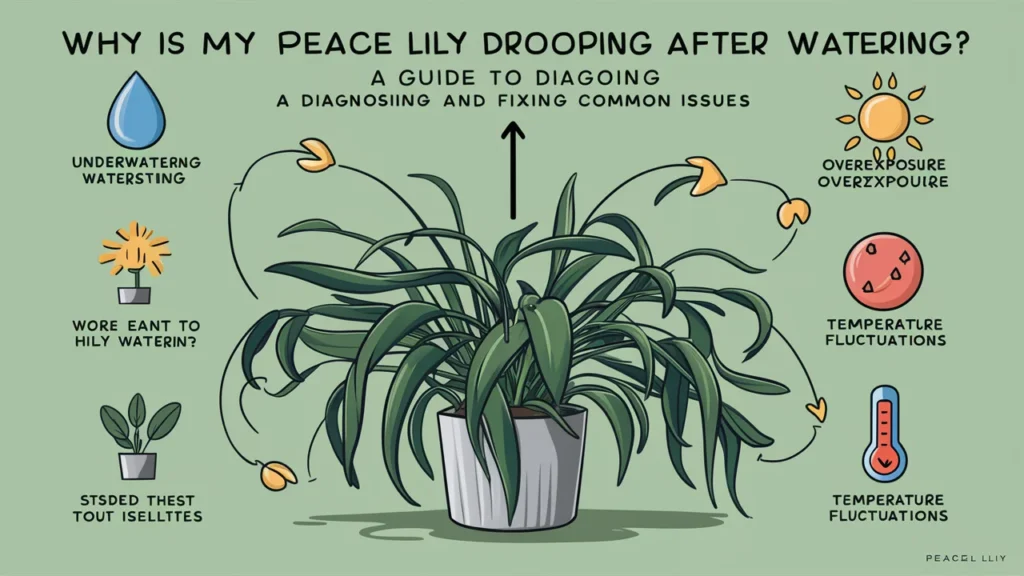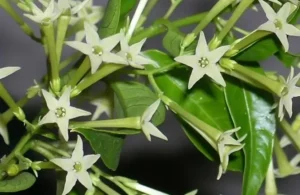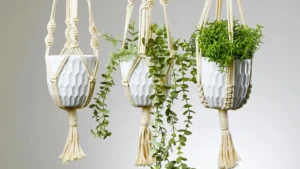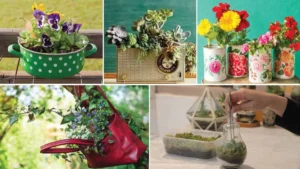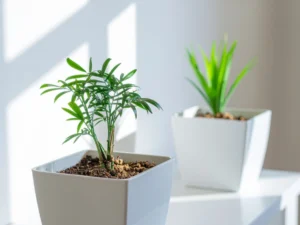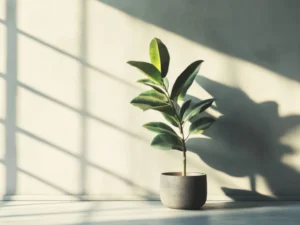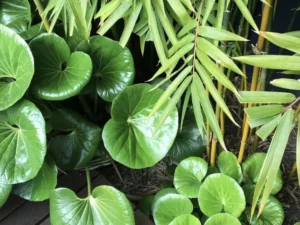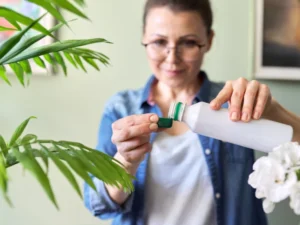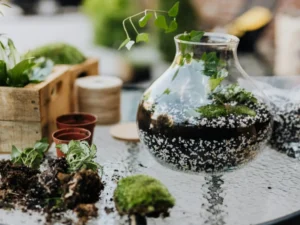When you see your peace lily wilt even after watering it, it can be confusing and irritating. If you are asking yourself, “why is my peace lily drooping even after watering?” then you are not alone. This is a common problem many plant owners have, which usually signifies more than just the soil being too wet. It is important to know the different potential causes and how they can be dealt with if your peace lily can be restored and remain healthy in future. This piece highlights some of the main reasons for this problem while providing realistic solutions that will get your peace lily back to its lively self.
Possible Causes Of Wilting Despite Watering
Root Rot:
Overwatering Issues: Over-watering may cause root rot due to excessive moisture in the soil even if you stick to a water schedule. When roots become infected by rot, they cannot effectively absorb water or nutrients leading to wilting plants. Look out for a mushy texture or unpleasant smell indicating signs of rot on roots.
Improper Soil Drainage:
Soil Quality: Well-drained soil is needed for peace lilies. Soggy soil often leads to poor root health when it does not drain well enough. Check if your soil remains overly moist despite your watering routine and consider using another mix that drains better during repotting.
Temperature Extremes:
Heat Stress or Cold Drafts: Temperature fluctuations or exposure to extreme temperatures can stress the plant, causing it to droop. Peace Lilies prefer stable temperatures between 65-80°F (18-27°C). Keep away the plant from drafts, heaters, air conditioners.
Humidity Levels:
Low Humidity: In high humidity environments peace lilies flourish best as dry indoor air at times may cause wilting. The situation can be improved by misting with water regularly, using a humidity tray or a room humidifier for the plant.
Nutrient Deficiency:
Lack of Essential Nutrients: A lack of certain nutrients like potassium and phosphorus can result in poor health and drooping. Avoid this by using balanced fertilizers during the growing season.
Pest Infestations:
Insects and Pests: Plants get weaker when attacked by pests like spider mites or aphids leading to drooping. Make routine checks for pests’ infestation and control them as soon as you notice any through use of insecticidal soaps or neem oil.
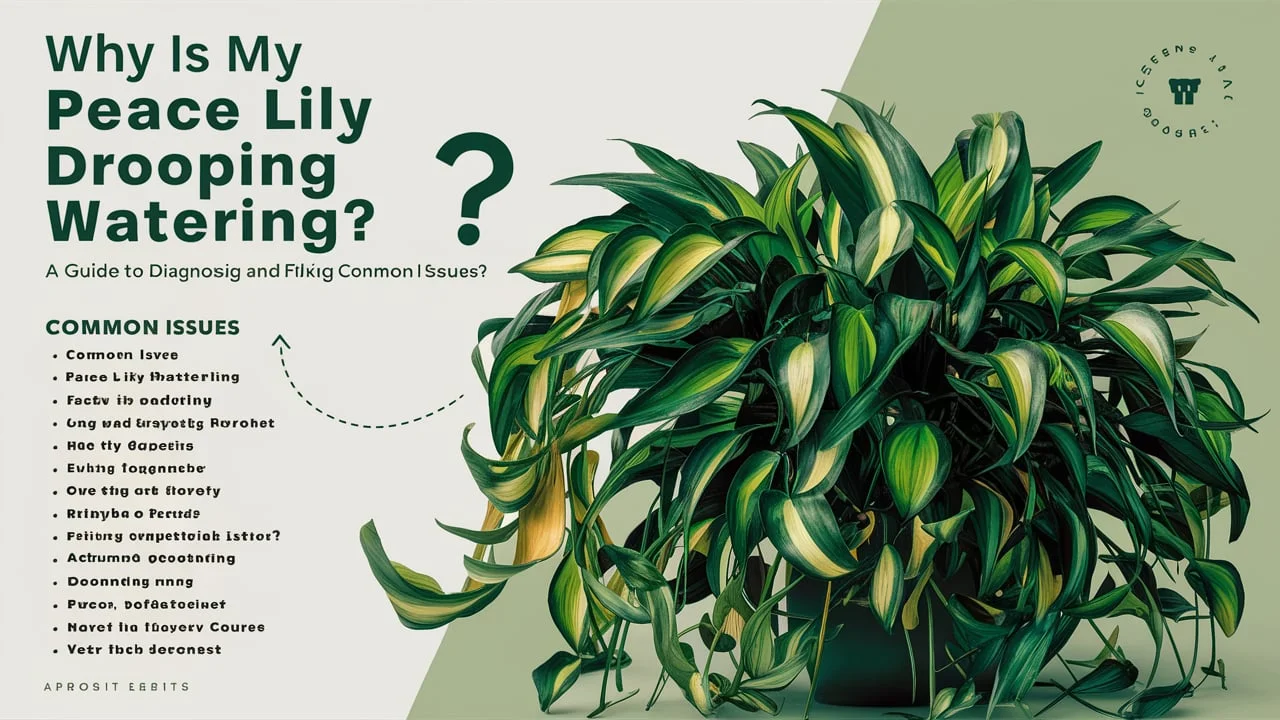
How to Remedy Wilting Even After Watering
Check and Improve Soil Drainage:
Repotting: Repot your peace lily in a pot that allows good drainage, with holes at the bottom if you suspect poor drainage. This will prevent water logging, promote healthy root growth.
Adjust Watering Practices:
Watering Schedule: Ensure that you’re watering correctly. Water the plant thoroughly, allowing excess water to drain out. Avoid letting the plant sit in standing water, which can lead to root rot.
Regulate Temperature and Light:
Stable Environment: Place your Peace Lily in a location with stable temperatures and away from extreme heat or cold. Ensure it receives bright, indirect light, as too much direct sunlight or too little light can stress the plant.
Increase Humidity:
Enhance Moisture: Increase the humidity around your Peace Lily by misting the leaves regularly or using a humidity tray.A room humidifier will also help to keep optimal humidity levels for your plant alive all day long
Fertilize Properly:
Supplying Nutrients; During the growing season apply a balanced water soluble fertilizer which provides essential nutrients. Do not use excessive amounts of the recommended fertilizer amount since it can as well lead to over-fertilization and plant stress.
Inspect for and Treat Pests:
Pest Control: Regularly examine your Peace Lily for any pests. Such infestations should be treated with appropriate means of pest control in order to prevent further injury from happening to the plant.
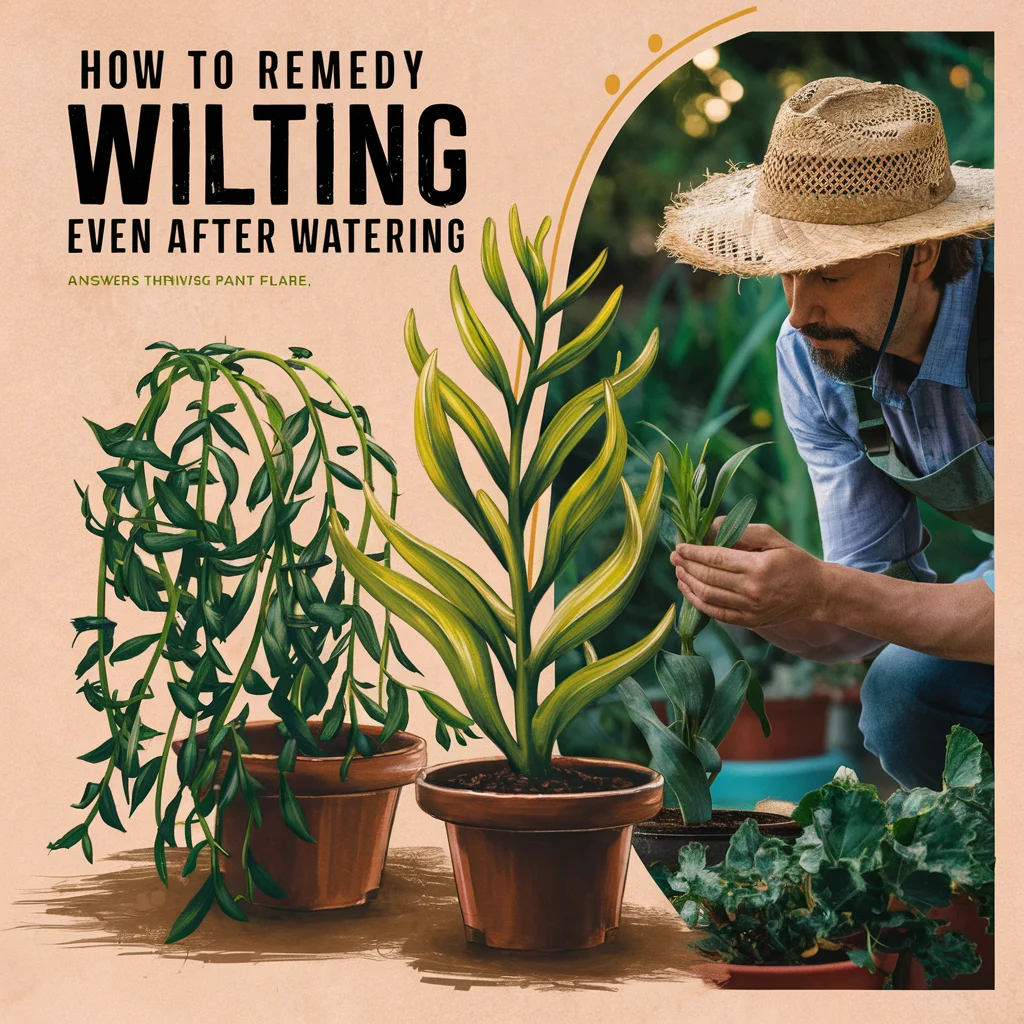
Conclusion
If your Peace Lily remains weak even after watering, there could be some other factors involved than just soil moisture. Among the possible causes includes root rot, weak drainage system, extremes in temperature, low humidity levels, lack of nutrients and presence of insects that invade them thus making them droop. If you consider these likely causes and then follow through with the suggestions provided; you will realize that your peace lily is going to improve tremendously by doing so as well as grow well again. With proper care and attention, your Peace Lily will be back to its lush, vibrant self in no time.

